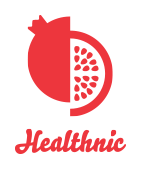2. Theoretical Part
2.1 Philosophy
2.1.1 Context to HEALTHNIC
In the current social, economic and political times across Europe, there are many social-economic and welfare changes that have the greatest (negative) impact on the most vulnerable in the community – whether long term unemployed, immigrants, asylum seekers and refugees. These groups often experience the greatest level of disadvantage, lack of mobility, reliance on social welfare and low levels of well-being. 2 It is well documented that levels of poor health are often higher in poor and disadvantaged communities, which is exacerbated by social isolation and exclusion. Hence, without addressing these issues, integration can be hindered. 3 This project looks beyond labels, acknowledging the differences and similarities in people, or the things that disadvantage them. Instead, it recognizes people’s skills, their resilience and their knowledge in order to build better relationships and stronger communities. It is about taking the best of what local people and newcomers bring to the table, using the medium and social interaction of cooking, sharing and eating well, to create something new to help us all in the future.
Specifically, this will be achieved through the practical and educational HEALTHNIC Workshop series where participants have the opportunity to: Learn about nutrition, healthy eating, food preparation, budgeting and cooking Acquire basic skills (language; ICT; communication skills) Create digital stories Gain cultural awareness and understanding to foster inclusion and integration.
[2] http://www.europarl.europa.eu/RegData/etudes/BRIE/2016/573908/EPRS_BRI(2016)573908_EN.pdf
[3] http://ec.europa.eu/eurostat/statistics-explained/index.php/Europe_2020_ indicators_- poverty_and_social_exclusion
